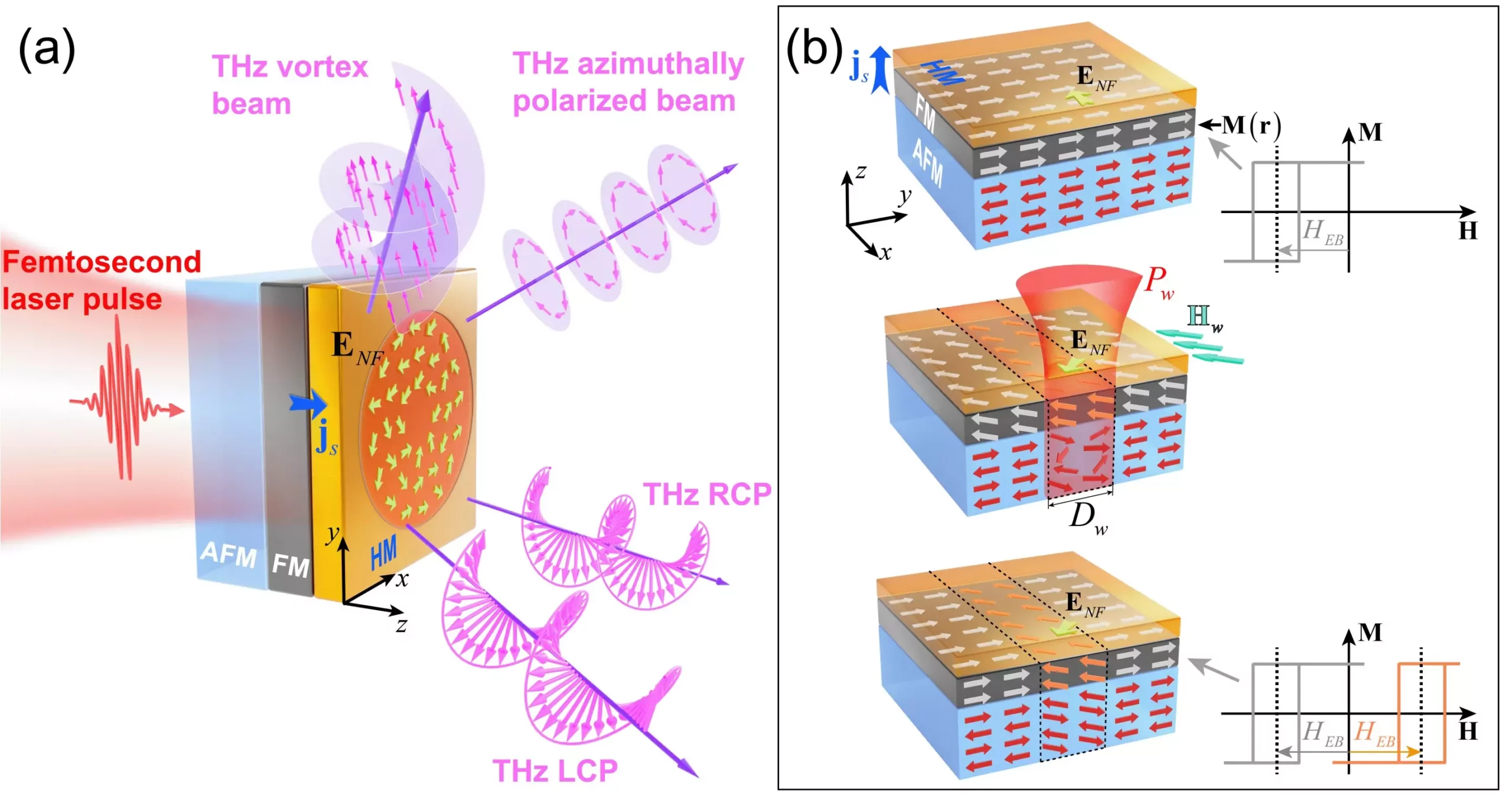Recent advancements in terahertz technology are shaping a new frontier in the realm of photonics, primarily through the innovative use of programmable spintronic emitters. This new approach, as spearheaded by a collaborative team from Fudan University and Capital Normal University, opens up exciting possibilities for generating highly structured terahertz light beams. Unlike previous methods of terahertz light generation, which often struggled with efficiency and control, the introduction of magnetic multilayers opens a novel pathway, allowing researchers to manipulate light at unprecedented levels.
Terahertz radiation occupies the niche between microwave and infrared light across the electromagnetic spectrum. This region has long been celebrated for its potential applications, spanning from security scanners that enhance safety measures to advanced medical imaging that can transform diagnostic procedures. Yet, one of the critical barriers to harnessing terahertz technology has been the difficulty in generating light beams with the desired precision and control. Herein lies the significance of the recent research led by Prof. Zhensheng Tao and his colleagues; they are dismantling these barriers using programmable spintronic technologies.
Innovative Spintronic Emitters: Unlocking New Potentials
The novel programmable spintronic emitters developed in this study are rooted in the concept of exchange-biased magnetic multilayers. Comprising alternating layers of magnetic and non-magnetic materials, these devices convert laser-induced spin-polarized currents directly into broadband terahertz radiation. The ability for high precision programming of the magnetization pattern makes this technology especially powerful. Graduate student Shunjia Wang, the study’s first author, articulates the importance of this level of control, stating, “This allows us to design and generate terahertz beams with complex polarization states,” which expands the horizon of what terahertz applications can achieve.
The structured terahertz beams produced through this mechanism hold a remarkable feature: they can exhibit distinct polarization states. The ability to create both azimuthal and radial polarizations, along with circular polarizations separated in space, enhances scope for applications far beyond mere illumination. By generating a fully-fledged Poincaré beam, the researchers highlight a highly sophisticated method of controlling light interactions that could lead to game-changing technology in optical force generation and advanced measurement techniques.
The Path Forward: Implications for Future Applications
The implications of this research extend deeply into various fields. The crafted terahertz beams are ideal not only for improved imaging applications but also for the burgeoning field of ultrafast communication. In scenarios where speed and precision are paramount, the tailored and programmable nature of these emitters can bolster efficiencies that traditional methods cannot match. With the researchers successfully demonstrating the generation of these structured beams, the groundwork is laid for introducing innovative terahertz devices.
Prof. Zhensheng Tao’s assertion that these findings “pave the way for novel terahertz devices with enhanced functionalities” summarizes the gravity of this work. The realms of technology, health, and safety stand to benefit tremendously from advances in terahertz methods and devices. As research in this area continues to gain momentum, the confluence of theory and practical application promises to yield tools that could redefine multiple industries, placing the control of light directly into our hands.

